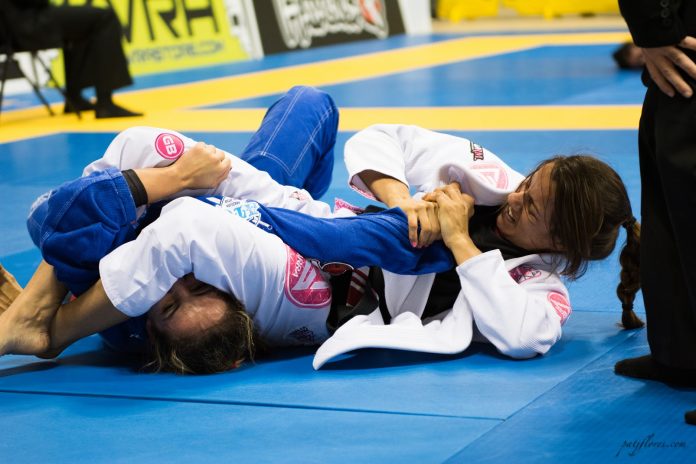
The armbar is one those moves that pop up to your head right away when you think of submission. It is an age-old submission lock that many martial arts claim as their own. Regardless of origin, Juod is the art that perfected the armbar. In BJJ, the armbar is one of the most basic, yet effective submissions you can do. AS such it must be the focus of everyone training the Gentle Art. This is particularly the case for beginners. Make sure you learn the armbar sooner rather than later in your BJJ journey.
The armbar AKA the Juji Gatame is a Judo submission that targets the elbow joint. It is an extremely strong submission as the point is using your whole body against the opponent’s isolated limb. In Brazilian Jiu-Jitsu, the armbar is available from a multitude of positions, equally effective from all. It works against black belts as good as it does against white. The move, however, has a complex mechanics despite the simple principles behind its execution. It is a basic submission that is by no means limited to white and blue belts only. However, today’s focus is going to be on the details white belts need to look for in order to master the armbar.
As a white belt, the focus when performing an armbar should be on two things. The first is holding the position long enough to get the submission. Next, it is the mechanics of finishing the submission. These are both very wide areas of focus but also very important ones. Lernt to stay in position long enough to apply breaking mechanics and you’ll be well on your way to becoming an armbar machine.
What Is An Armbar?
The basic mechanics of the armbar are simple. It is an armlock that requires the arm to be completely straight. The break is due to hypertension of the elbow joint. In order to do so, you need to be able to force your hips to the outside of the opponent’s elbow. With the correct leverage, you can easily break the arm of a much stronger opponent. As with all BJJ techniques, it is all about the details.
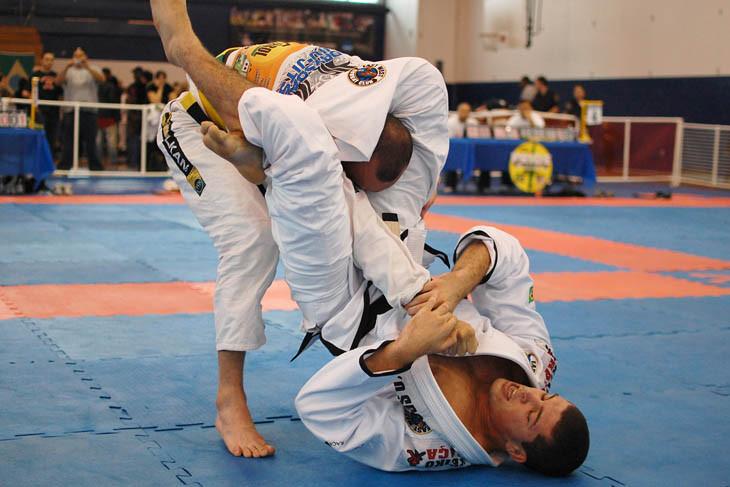
To control an opponent in the armbar position, you first have to ensure they can’t move their arm. There are three steps to doing this. To begin with, squeeze your knees as tight as possible so that they can’t slip away. Next, glue their forearm to your chest and turn their thumb up, like when hitchhiking. Finally, dig your heels on the floor. This is going to enable you to have a power source to finish the move, but also react in time to possible defenses and/or escape attempts. As a beginner, you need to be able to stay in the position long enough to finish. What you need to remember though, is that without these three positional details, you won’t be able to achieve a finish on a regular basis.
4 Basic Armbar Setups
Once you know how to stay in control, you’ll need to understand the finish. IF everything is tight, all it takes is to lift your hips in the direction of their elbow. In order to ensure that you’re not allowing any space, focus on keeping their forearm glued to your chest. No matter which position you’re in, the same control and breaking mechanics apply. All you need is to look for these pointers and you won’t miss another armbar ever again!
 From The Closed Guard - The closed guard armbar is as basic as it gets. All you need to remember when running for the armbar from the closed guard is that posture is your enemy. If you let your opponent posture up, you’re going to lose the submission. In order to prevent this, you need to place weight on their back from the moment you start setting it up. The best way to do so is to first one, and later on both of your legs on the opponent’s back and neck. When you have their posture broken, finishing is just a game of patience and details.
From The Closed Guard - The closed guard armbar is as basic as it gets. All you need to remember when running for the armbar from the closed guard is that posture is your enemy. If you let your opponent posture up, you’re going to lose the submission. In order to prevent this, you need to place weight on their back from the moment you start setting it up. The best way to do so is to first one, and later on both of your legs on the opponent’s back and neck. When you have their posture broken, finishing is just a game of patience and details.
To set up the closed guard armbar you need to isolate an opponent’s arm but pulling it high towards one of your shoulders. Next, you’ll have to open the guard, break the opponent’s posture and then look to swing the second leg over. If you swing too early you’re going to miss it. The finishing details are the same as explained above.
 From Side Control - When in side control. always remember that the arm you can attack with an armbar is the far side one. To get into position, you’ll need to spin around your opponent. What makes this really easy is to make your opponent turn into you first. That way, you’ll shorten the distance you need to cover.
From Side Control - When in side control. always remember that the arm you can attack with an armbar is the far side one. To get into position, you’ll need to spin around your opponent. What makes this really easy is to make your opponent turn into you first. That way, you’ll shorten the distance you need to cover.
The focus should be on isolating the arm at elbow hight. When you have isolation. raise up and pull the arm towards the ceiling. This is going to cause your opponent to turn towards you, allowing you to sit over their head and straight into the armbar position. Finishing details are the same as before.
From The Mount - The mounted armbar is a BJJ classic. it is the one attack most people tend to look for from the mount, especially for beginners. When you’re learning this move you need to focus on how you get to the position for finishing instead of the finish itself.
 Once again it all starts with isolating and arm. Once you have an arm, you’ll need to use both of your arms on the opponent’s chest to pivot. This puts pressure on the opponent while allowing you to get into position at the same time. From there, keep your weight on the opponent and slowly place your leg over their head. It doesn’t have to be one motion, you just need to make sure you’re heavy. Finally, when you lay back, focus on keeping your butt as close as possible to the opponent’s shoulder.
Once again it all starts with isolating and arm. Once you have an arm, you’ll need to use both of your arms on the opponent’s chest to pivot. This puts pressure on the opponent while allowing you to get into position at the same time. From there, keep your weight on the opponent and slowly place your leg over their head. It doesn’t have to be one motion, you just need to make sure you’re heavy. Finally, when you lay back, focus on keeping your butt as close as possible to the opponent’s shoulder.
 From The Back - The armbar from back control is actually a follow up when an opponent defends the choke. While it is not a beginner move per say, it is not one that is uncommon among new students. To perform it correctly, you need to be on the ‘weak side” of back control. That means that your choking arm is on the top and you’re lying on your underhook arm. Once there place a Kimura grip (figure four) on the opponent’s top arm and you’re halfway there. All you need to do is clear the head, and swing your bottom leg over the head. You’ll end up in the same finishing position as from the mount and side control.
From The Back - The armbar from back control is actually a follow up when an opponent defends the choke. While it is not a beginner move per say, it is not one that is uncommon among new students. To perform it correctly, you need to be on the ‘weak side” of back control. That means that your choking arm is on the top and you’re lying on your underhook arm. Once there place a Kimura grip (figure four) on the opponent’s top arm and you’re halfway there. All you need to do is clear the head, and swing your bottom leg over the head. You’ll end up in the same finishing position as from the mount and side control.
Common Armbar Mistakes
The armbar might be a seemingly simple move, but as you see, it has a lot of details to it. Every different setup has its own nuances that you need to master. For beginners, the most important thing is learning how to control the position and finish. In order to ensure you’re not stuck with common beginner errors, you first need to be aware of them. The following three situations are commons ticking points for people relatively new to grappling.
- Butt To Shoulder. As mentioned in the mount setup, you need to be as close to your opponent’s shoulder as possible. The closer you are, the less space there is. Consequently, the less space there is, the better your control is. Once you figure out how to stick close to the shoulder you’ll discover that most spinning escapes are not going to work.
- Tight Legs. Secondly, as mentioned throughout this article you need to keep your legs close. What beginners often do, is they focus on extending the hip so much, they forget about the legs. This opens up space to defend as well as prevent you from finishing. Make sure that keeping your legs tight is a top priority to control and finish an armbar.
- Thumbs Up. Finally, even if you the previous two points are in order, people seem to struggle with the finish, the directionality of force needs to be towards the outside of the elbow, as covered, If your opponent’s arm can bend in any direction, they’ll be able to resist the finish. This is due to forgetting that the thumb of the opponent’s arm needs to point to the ceiling, like when hitchhiking. It makes a world of difference so think about it next time you’re trying to armbar, someone.
You Might Be Interested In:
White Belt Mistakes Affecting You As A Blue Belt
OMOPLATA and Everything About It!
Attacking From the X-Guard
Peruvian Necktie – A Tight Choke And A Brutal Neck Crank
Simple Side Control Escape Concepts You Must Know


![Darce Choke Encyclopedia – Origins, Mechanics and Variations [2025] BJJ, choke, Brabo, BJJ Darce Choke, D'arce Choke, Darce BJJ Choke](https://bjj-world.com/wp-content/uploads/2017/11/JungPoirierLeeYahoo-218x150.jpg)







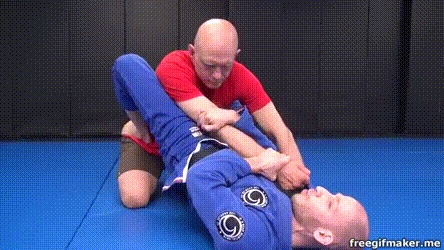 From The Closed Guard - The closed guard armbar is as basic as it gets. All you need to remember when running for the armbar from the closed guard is that posture is your enemy. If you let your opponent posture up, you’re going to lose the submission. In order to prevent this, you need to place weight on their back from the moment you start setting it up. The best way to do so is to first one, and later on both of your legs on the opponent’s back and neck. When you have their posture broken, finishing is just a game of patience and details.
From The Closed Guard - The closed guard armbar is as basic as it gets. All you need to remember when running for the armbar from the closed guard is that posture is your enemy. If you let your opponent posture up, you’re going to lose the submission. In order to prevent this, you need to place weight on their back from the moment you start setting it up. The best way to do so is to first one, and later on both of your legs on the opponent’s back and neck. When you have their posture broken, finishing is just a game of patience and details.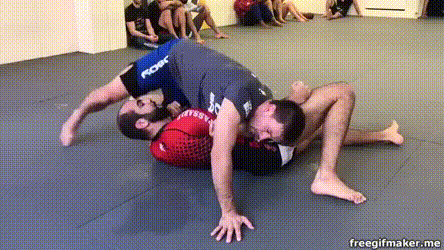 From Side Control - When in side control. always remember that the arm you can attack with an armbar is the far side one. To get into position, you’ll need to spin around your opponent. What makes this really easy is to make your opponent turn into you first. That way, you’ll shorten the distance you need to cover.
From Side Control - When in side control. always remember that the arm you can attack with an armbar is the far side one. To get into position, you’ll need to spin around your opponent. What makes this really easy is to make your opponent turn into you first. That way, you’ll shorten the distance you need to cover.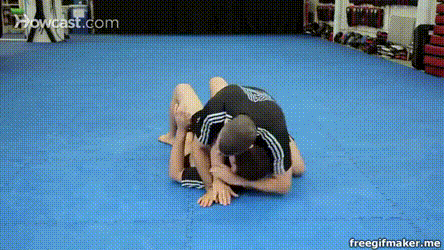 Once again it all starts with isolating and arm. Once you have an arm, you’ll need to use both of your arms on the opponent’s chest to pivot. This puts pressure on the opponent while allowing you to get into position at the same time. From there, keep your weight on the opponent and slowly place your leg over their head. It doesn’t have to be one motion, you just need to make sure you’re heavy. Finally, when you lay back, focus on keeping your butt as close as possible to the opponent’s shoulder.
Once again it all starts with isolating and arm. Once you have an arm, you’ll need to use both of your arms on the opponent’s chest to pivot. This puts pressure on the opponent while allowing you to get into position at the same time. From there, keep your weight on the opponent and slowly place your leg over their head. It doesn’t have to be one motion, you just need to make sure you’re heavy. Finally, when you lay back, focus on keeping your butt as close as possible to the opponent’s shoulder.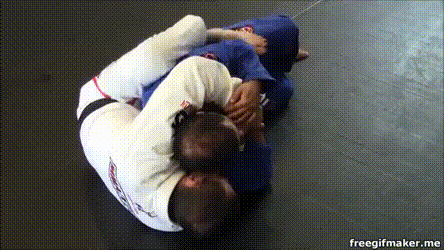 From The Back - The armbar from back control is actually a follow up when an opponent defends the choke. While it is not a beginner move per say, it is not one that is uncommon among new students. To perform it correctly, you need to be on the ‘weak side” of back control. That means that your choking arm is on the top and you’re lying on your underhook arm. Once there place a Kimura grip (figure four) on the opponent’s top arm and you’re halfway there. All you need to do is clear the head, and swing your bottom leg over the head. You’ll end up in the same finishing position as from the mount and side control.
From The Back - The armbar from back control is actually a follow up when an opponent defends the choke. While it is not a beginner move per say, it is not one that is uncommon among new students. To perform it correctly, you need to be on the ‘weak side” of back control. That means that your choking arm is on the top and you’re lying on your underhook arm. Once there place a Kimura grip (figure four) on the opponent’s top arm and you’re halfway there. All you need to do is clear the head, and swing your bottom leg over the head. You’ll end up in the same finishing position as from the mount and side control.

![[WATCH] Mica Galvão Snaps Roberto Jimenez’s Arm at BJJ Stars 15 Mica Galvão Snaps Roberto Jimenez’s Arm at BJJ Stars 15](https://bjj-world.com/wp-content/uploads/2025/04/watch-mica-galvao-snaps-roberto-jimenezs-arm-at-bjj-stars-15-218x150.png)
![Frame Lasso Robson Moura DVD Review [2025] Frame Lasso Robson Moura DVD Review](https://bjj-world.com/wp-content/uploads/2025/04/frame-lasso-robson-moura-dvd-review-218x150.png)

![Leg Locks Finishes Helena Crevar DVD Review [2025] Leg Locks Finishes Helena Crevar DVD Review](https://bjj-world.com/wp-content/uploads/2025/04/leg-locks-finishes-helena-crevar-dvd-review-218x150.png)


![Shotgun Aoki Locks Mateusz Szczecinski DVD Review [2025] Shotgun Aoki Locks Mateusz Szczecinski DVD Review](https://bjj-world.com/wp-content/uploads/2025/03/shotgun-aoki-locks-mateusz-szczecinski-dvd-review-324x235.png)
![Shoulder Lock Mastery Zach Green DVD Review [2025] Shoulder Lock Mastery Zach Green DVD Review](https://bjj-world.com/wp-content/uploads/2024/12/shoulder-lock-mastery-zach-green-dvd-review-100x70.png)



![Heavy Top Game Fabiano Scherner BJJ DVD Review [2025] Heavy Top Game Fabiano Scherner BJJ DVD Review](https://bjj-world.com/wp-content/uploads/2025/01/heavy-top-game-fabiano-scherner-bjj-dvd-review-100x70.png)




![Guard Busters Bill Cooper BJJ DVD Review [2025] Guard Busters Bill Cooper BJJ DVD Review](https://bjj-world.com/wp-content/uploads/2025/03/guard-busters-bill-cooper-bjj-dvd-review-100x70.png)
![Advantage Over Time Outside Passing Jozef Chen DVD Review [2025] Advantage Over Time Outside Passing Jozef Chen DVD Review](https://bjj-world.com/wp-content/uploads/2025/03/outside-passing-jozef-chen-dvd-review-100x70.png)
![Bricks Kesa Gatame System Jeremy Brick DVD Review [2025] Bricks Kesa Gatame System Jeremy Brick DVD Review](https://bjj-world.com/wp-content/uploads/2025/02/bricks-kesa-gatame-system-jeremy-brick-dvd-review-100x70.png)
![Daisy Fresh WHITE BELT Wrestling Curriculum DVD Review [2024] Daisy Fresh WHITE BELT Wrestling Curriculum DVD Review](https://bjj-world.com/wp-content/uploads/2024/10/daisy-fresh-white-belt-wrestling-curriculum-review-100x70.png)
![Leg Lock Stock And Barrel Taylor Pearman DVD Review [2025] Leg Lock Stock And Barrel Taylor Pearman DVD Review](https://bjj-world.com/wp-content/uploads/2025/03/leg-lock-stock-and-barrel-taylor-pearman-dvd-review-100x70.png)
![Leg Locks Finishes Helena Crevar DVD Review [2025] Leg Locks Finishes Helena Crevar DVD Review](https://bjj-world.com/wp-content/uploads/2025/04/leg-locks-finishes-helena-crevar-dvd-review-100x70.png)
![Countering with Crab Ride Anthony Budion DVD Review [2025] Countering with Crab Ride Anthony Budion DVD Review](https://bjj-world.com/wp-content/uploads/2025/03/countering-with-crab-ride-anthony-budion-dvd-review-100x70.png)

![Collar Sleeve Guard Mikey Musumeci DVD Review [2024] Collar Sleeve Guard Mikey Musumeci DVD Review](https://bjj-world.com/wp-content/uploads/2024/12/collar-sleeve-guard-mikey-musumeci-dvd-review-100x70.png)
![Leg Entanglement System: X Lock Owen Jones DVD Review [2025] Leg Entanglement System: X Lock Owen Jones DVD Review](https://bjj-world.com/wp-content/uploads/2025/04/leg-entanglement-system-x-lock-owen-jones-dvd-review-100x70.png)
![Leg Lock Strategies: Navigating Entanglements Jack Stapleton DVD Review [2024] Leg Lock Strategies: Navigating Entanglements Jack Stapleton DVD Review](https://bjj-world.com/wp-content/uploads/2024/12/navigating-entanglements-jack-stapleton-dvd-review-100x70.png)

![Baby Shark Guard System Diogo Reis DVD Review [2025] Baby Shark Guard System Diogo Reis DVD Review](https://bjj-world.com/wp-content/uploads/2025/02/baby-shark-guard-system-diogo-reis-dvd-review-100x70.png)
![Special K Guard Neil Melanson DVD Review [2025] Special K Guard Neil Melanson DVD Review](https://bjj-world.com/wp-content/uploads/2025/03/special-k-guard-neil-melanson-dvd-review-100x70.png)

![Complete Front Headlock System Michael Pixley DVD Review [2024] Complete Front Headlock System Michael Pixley DVD Review](https://bjj-world.com/wp-content/uploads/2024/10/front-headlock-system-michael-pixley-dvd-review-100x70.png)


![Reverse De La Riva System Mikey Musumeci DVD Review [2024] Reverse De La Riva System Mikey Musumeci DVD Review](https://bjj-world.com/wp-content/uploads/2024/11/reverse-de-la-riva-system-mikey-musumeci-dvd-review-100x70.png)
